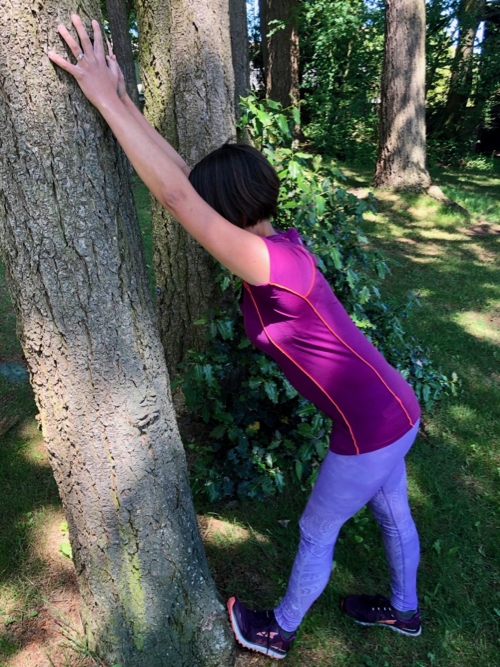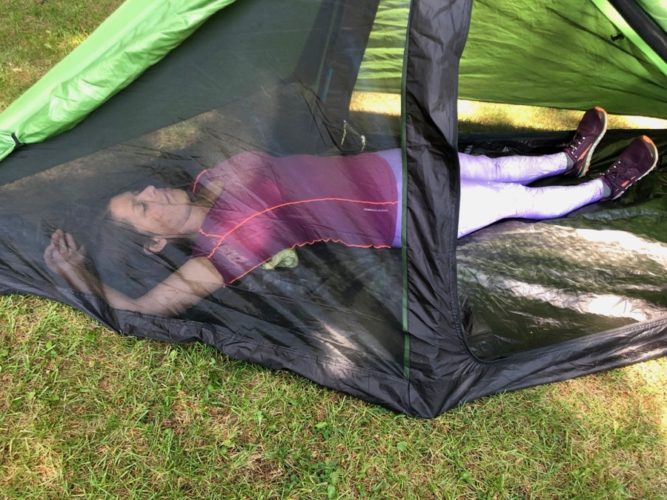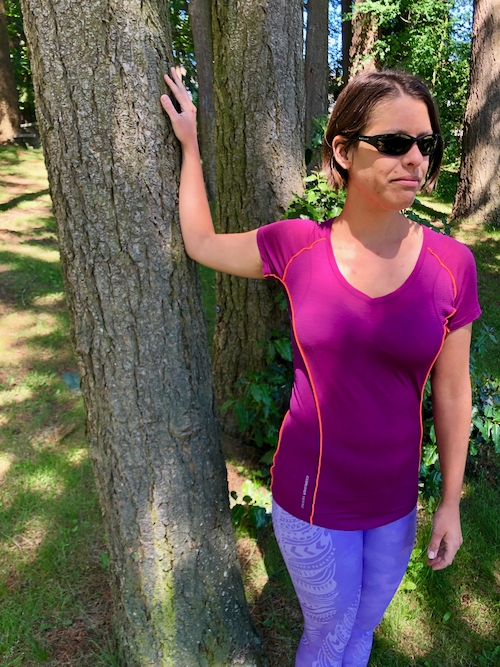8 of the Best Stretches for Thru-Hikers
Long-distance backpacking may not be considered a sport by some, but that doesn’t mean hikers aren’t endurance athletes. Thru-hiking requires stamina, muscular endurance, stability, and mental fortitude. A good athlete practices a holistic approach to fitness: nutrition, rest, and mobility alongside the more strenuous training. Stretching helps to keep the muscles flexible, strong, and healthy.
For this article we consulted with Dan Pulsifer, a certified fitness trainer, who shared some great stretches designed to keep you balanced from head to toe. Hold each stretch for the recommended time, and repeat as necessary.
1) Calf Stretch
What: Soleus muscle of the calf.
Why: The calves bear the brunt of the trail effort and can be especially painful when changing the length of your stride.
How: Find a stick or rock at least a few inches high. Place the ball of your foot on the object with your heel rooted in the ground. Push the knee forward, aiming between your big toe and second toe. Try to get the knee past your toes to feel the stretch. Use trekking poles to help with balance and weight distribution, being careful not to hyperextend your knee. Hold for 30-45 seconds.
2) Shin Stretch
What: Tibialis anterior.
Why: This muscle engages with nearly every step. Hours of walking puts a lot of strain on the small muscles of your shin.
How: Kneel down with the tops of your feet pressing into the ground. Ease your weight back onto your heels, keeping it even between both feet. If there’s discomfort on your knees, place a pad or cushioning underneath. Alternately, place some cushioning between your ankles and butt. Try to sit upright, keeping weight over the ankle joint. Hold for 30-45 seconds.
3) Hamstring Stretch
What: Hamstring.
Why: You’re far more likely to pull or strain a hamstring when the muscle is overly tight and can’t properly lengthen. This stretch will help it reach its full range.
How: Find a tree or a rock wall. Lift your toes and place them against the tree with your heel anchored firmly on the ground. Stretch your arms above your head with your hands on the tree or wall. Keeping your hands anchored, gently slide your hips back. Hold for 30-45 seconds. Repeat with other leg.
4) Standing Pigeon Pose
What: Piriformis muscle and other external hip rotators.
Why: Hiking on uneven terrain works a lot more of the smaller muscles of the hip. This stretch helps to maintain balance between the hips.
How: Anchor one foot into the ground. Lift the other leg and cross the ankle just above the knee of the anchor leg. Ease your hips back like you were sitting into a chair, hinging at the waist. You should feel a stretch in the outer hip. You may need to keep some pressure on the raised knee to keep the hips level. Use a trekking pole for balance. Try to keep your back straight and your head up.
This stretch can also be done from a seated or reclined position.
5) Spinal Massage
What: Thoracic spine.
Why: With extra weight on your back and long days of repetitive movement, the spine tends to collapse and round forward. This gentle massage will help to relieve the spine and establish a more neutral spinal alignment.
How: Lay out your mat or tarp. Roll a shirt or jacket into a tight roll, about two inches wide. Lie down on your back and place the roll perpendicularly under your spine, slightly above the base of your ribs. Anchor your heels into the ground and gently flex your feet back and forth, sending rhythmic waves through your body. After 10-20 seconds, move the roll an inch or two up your spine and repeat the movement. Continue up your spine to just below the base of your neck. Breathe and relax.
5) Shoulder Mobility
What: Shoulder girdle.
Why: Pack straps dig into shoulder muscles and often create a more forward-rounded posture. This stretch helps to maintain mobility in the shoulders and to improve posture.
How: Extend a trekking pole to its full length. Take a wide grip and stand with your feet hip width apart. Hold the pole at chest level then press the bar overhead. Pull the shoulder blades back and down, bringing the bar behind your head. Avoid pushing the head forward. Slowly reverse the motion and repeat 10-15 times.
6) Chest Opener
What: Pectoralis major.
Why: As the shoulders round forward, the pec major shortens and tightens. Try this to stretch your chest muscles, which can also help improve your breathing.
How: Find a tree and stand just to the side. Place palm and forearm on the tree. From this position, gently rotate hips and opposite shoulder away from the tree. The deeper the rotation, the more intense the stretch. Hold for 30-45 seconds and repeat on other side.
Move arm upward or downward on the tree to affect different areas of the pec.
7) Neck Mobility
What: Multiple neck muscles.
Why: Hikers spend a lot of the day looking down at the trail. These stretches will help relieve head and neck pain and tension.
How: Sit or stand in an upright position. Try to lengthen the spine, imagining a string pulling the top of your head to the sky. From this position, tuck the chin without bending the neck. Gently place your fingers on the back of your head and allow the weight of your hands to increase the stretch on the back of your neck. Hold for 30-45 seconds.
Once complete, return to the upright position. Bend your elbow and place one hand on the lower back with the palm out. Bring the opposite ear to the shoulder then tip slightly forward to create an angle. Place your other hand on top of the head to intensify the stretch. Rotate the chin to find the best angle for you. Hold for 30-45 seconds. Repeat on other side.
8) Self-Massage
Perhaps one of the best things you can do for yourself on trail is to indulge in soothing self-massage. Use your thumbs to work at a knot, the heel of your palms to run down a leg muscle, and your fingers to dig into the shoulder muscles. Give your feet lots of love by rubbing your arch and heel and putting your fingers between your toes. Many hikers are also bringing tools to help with massage, such as cork massage balls, nubby orb balls, tennis balls, or mini foam rollers. A beefy water bottle will also work in a pinch to really work those calve muscles!
Featured image photo via Zach Davis
This website contains affiliate links, which means The Trek may receive a percentage of any product or service you purchase using the links in the articles or advertisements. The buyer pays the same price as they would otherwise, and your purchase helps to support The Trek's ongoing goal to serve you quality backpacking advice and information. Thanks for your support!
To learn more, please visit the About This Site page.

 ">
">











Comments 4
Thanks for these – really clear instructions. I think photos for 1 and 3 are mixed up, though?
I don’t believe photos for 1 & 3 are mixed up. Photo 1 focuses on the calf muscle on her left leg because the toes are pointing up and adding pressure will give a deeper stretch. I believe photo 3 is referring to her left leg for the hamstring? But since the hamstrings bend the knee and extend the hip back, a better stretch would be lying on your back and lifting your leg up in the air with the knee straight and maybe using a t-shirt or towel to pull the straight leg closer to you. Or, sitting on the ground with legs out in front and leaning down to touch your toes. Side note, the calf has 2 muscles the gastrocnemius and the soleus. The soleus is deeper in the calf and in order to stretch that, you can do what she is doing in photo 1 but bend the leg when you lean into the stretch. Bending the leg allows for the soleus to be stretched and if you keep the knee extended, that is when the stretch focuses on the gastrocnemius.